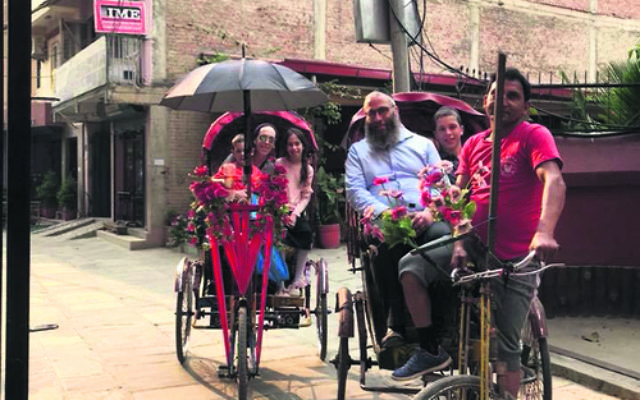Haggadah in the Himalayas
IF the question were posed, "Which city hosts the biggest seder in the world?" likely answers may include Jerusalem or New York. Somewhat surprisingly, however, the answer sits high up in the Nepalese mountaintops in the predominantly Hindu and Buddhist city of Kathmandu, where the city's first official seder was led in 1989 by Rabbi Mendel Kastel of Jewish House – then a 20-year-old rabbinical student at yeshivah in Sydney – along with fellow student Mendel Lipskier.
IF the question were posed, “Which city hosts the biggest seder in the world?” likely answers may include Jerusalem or New York.
Somewhat surprisingly, however, the answer sits high up in the Nepalese mountaintops in the predominantly Hindu and Buddhist city of Kathmandu, where the city’s first official seder was led in 1989 by Rabbi Mendel Kastel of Jewish House – then a 20-year-old rabbinical student at yeshivah in Sydney – along with fellow student Mendel Lipskier.
This year, for the event’s 30th iteration Rabbi Kastel returned for a Pesach celebration to remember. In fact, there were no fewer than 900 guests breaking matzah at the seder.
“It’s known as the biggest seder [and it’s] on top of the world and probably one of the most publicised seders around the world,” Rabbi Kastel told The AJN.
The event was created to “allow all people, no matter where they are, the opportunity to come together and celebrate,” commented Rabbi Kastel.
“I am delighted to have been able to travel with my entire family this year, back to Kathmandu, and to celebrate Passover.”
The idea for the seder, as reported in the April 14, 1989 edition of The Australian Jewish Times – the forerunner to The AJN – originated when the US-based Lubavitch movement heard that about 40 Israeli tourists and backpackers met for a seder in Nepal in 1986, followed by a gathering of 70 people the following year.
Inviting all known Jews in the region, Kastel and Lipskier initially hoped for a crowd of 150 attendees. But as word quickly spread, the students realised they had underestimated the event-pulling potential of a communal seder in Asia to attract Jews in their hundreds. Drawing contrasts between the seder he co-led all those years ago, and the one held this month, the rabbi commented, “Thirty years ago when we went, there was no internet and [there were] barely telephones out of Kathmandu … There was no gas so we had to build brick ovens … Now there is a rabbi there, a kosher restaurant and a synagogue.”
Though it may be three decades on, logistical difficulties remain challenging, noted Rabbi Chezky Lifshitz of Chabad House of Kathmandu. Border delays, strikes and earthquakes have previously affected the delivery of seder supplies.
With matzah and wine flown in from Israel – and taking around two months to arrive – the seder was a mammoth effort by all accounts, but – as Rabbi Kastel reflected – “It’s been an experience of a lifetime … one we will never forget.”
SOPHIE DEUTSCH


comments